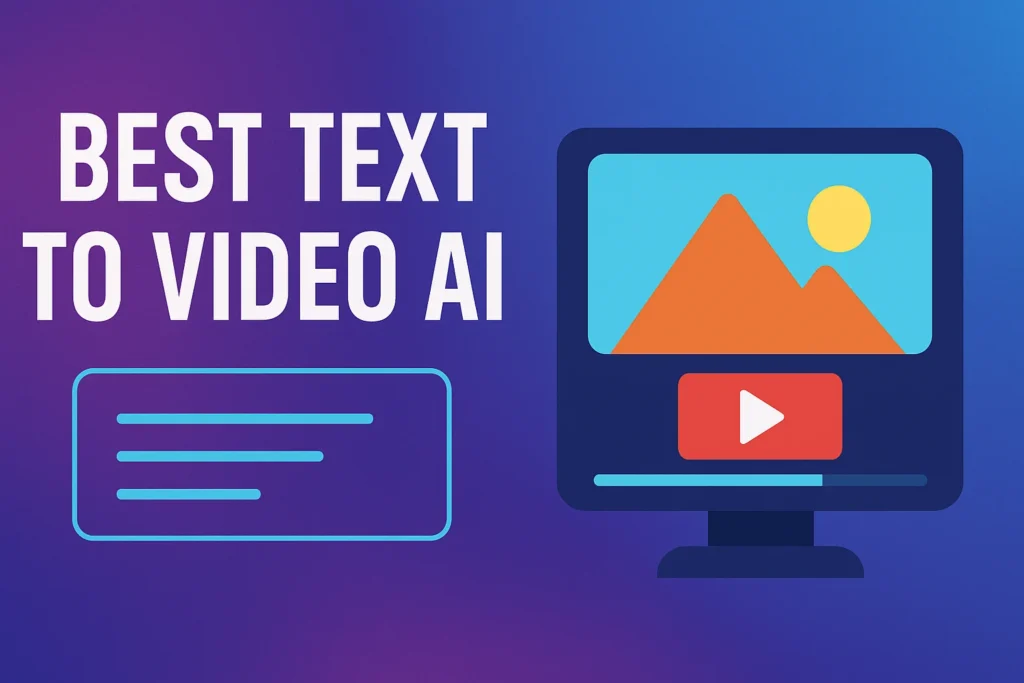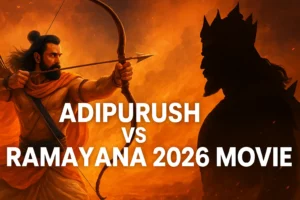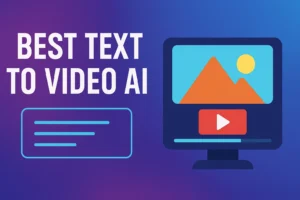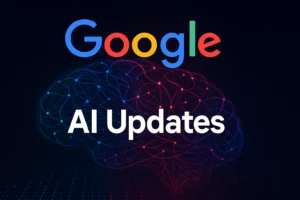In the ever-evolving world of generative AI, text to video AI tools have emerged as the next frontier, transforming simple written prompts into cinematic clips. On July 3, 2025, the biggest players—Google, OpenAI, Baidu, Midjourney, Luma Labs, and others—are not only refining their offerings but reshaping how we create video content. This article dives deep into what makes up the best text to video ai, exploring the freshest innovations, real-world examples, and emerging trends.
1. Google’s Veo 3: Leading the Pack
What is Veo 3?
Google DeepMind’s Veo video-generation model reached its third major iteration—Veo 3—on May 20, 2025, and represents a major leap in text-to-video creativity. Unlike earlier versions, Veo 3 combines lifelike visuals with synchronized audio—including dialogue, ambient effects, and music—transcending the realm of silent animations.
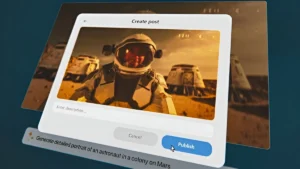
Why it matters today—July 3, 2025
-
Released globally in public preview via Vertex AI and accessible to Google Cloud users.
-
Now available in India and the Middle East through Gemini AI Pro subscriptions.
-
Offers 720p cinematic-quality clips up to 8 seconds, complete with lip-sync capabilities and advanced physics simulation.
Strengths & Limitations
-
Strengths: Unmatched realism, full audio integration, physics-aware animations.
-
Limitations: Subscription-based; daily limits (three clips/day for Pro); ethical concerns—some Veo 3–generated racist videos have gone viral on TikTok.
2. OpenAI’s Sora: Cream of the Crop
What’s Sora?
Released in December 2024 via ChatGPT Plus/Pro, Sora is OpenAI’s flagship text-to-video model. Fully integrated into ChatGPT, it lets users prompt video generation directly from their conversational interface.
Latest Developments
-
Built on diffusion-transformer architecture, Sora excels at translating text into vivid video clips.
-
OpenAI is testing deeper integration into ChatGPT in early 2025.
-
Widely praised in user communities for prompt-to-clip capabilities.
Pros:
-
Deep ChatGPT integration means seamless ideation-to-creation workflows.
-
Video quality rivals high-end generative tools.
-
Uses metadata tagging (e.g., C2PA) for authenticity.
Cons:
-
Physics limitations: occasional glitchiness in movement/transitions .
-
Paid access only.
-
Some video artifacts remain in complex scenes.
3. Midjourney Model V1: Venturing into Motion
In June 2025, Midjourney made headlines by debuting Model V1, their first text-to-video model. Known for their visually striking still images, Midjourney’s video offering brings cinematic motion and stylized movement into the fold.
Why it’s notable
-
Provides high customization over motion, transitions, and style.
-
Still in early access, but promising results already compare with Runway and Sora.
4. Luma Labs’ Dream Machine: Realistic Motion on a Budget
Dream Machine launched in June 2024, enabling users to create realistic five-second clips with rich movement handling . With free-tier access and an expanding feature set, it’s become a favorite among smaller creators.
Quick facts:
-
Clips up to five seconds, with daily generation limits.
-
Motion realism is impressive for the platform’s free or low-cost tier.
-
Subscription plans scale up to hundreds of clips.\
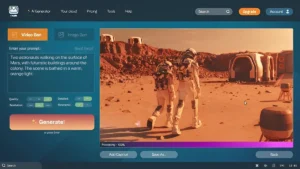
5. Baidu’s MuseStreamer: Business-Focused Innovation
On July 2, 2025, Baidu launched MuseStreamer, tailored to B2B users. It converts static images into dynamic 10-second videos using Turbo, Pro, and Lite versions.
Key use cases:
-
Internal marketing, product demos, training content.
-
Hosts robust options for enterprise deployment.
-
Not yet consumer-facing.
6. Other Contenders in the Best Text to Video AI Game
| Tool | Highlights |
|---|---|
| Canva (via Veo‑3) | Uses Google’s Veo 3 engine within its editor—great for users familiar with Canva’s UI . |
| Kling AI | Strong for cinematic sequences with start‑end image options; occasionally unstable . |
| Freepik AI Video Generator | Access to image and video generation—all-in-one toolkit . |
| Runway Gen‑2 | Known for filmmaking-grade editing; a steeper learning curve . |
| Veed.io | Easy web interface for social and training videos . |
| Pika Labs, Flux, Luma | Each tool brings unique strengths—some excel in motion, others in style . |
| Colossyan | Avatar-based text-to-video for training modules—100+ video scripts supported . |
| HeyGen | Photo-realistic AI avatars delivering content in multiple languages . |
Why These Qualify as the Best Text to Video AI
-
Quality of Generation
-
Veo 3 and Sora deliver high-fidelity visuals and coherent audio.
-
Dream Machine, though less robust, shines for those needing fast, affordable clips.
-
-
Ease of Use & Accessibility
-
Tools like Canva, Veed, and Freepik prioritize user experience with intuitive UIs.
-
Sora benefits from ChatGPT integration; MuseStreamer and Colossyan serve enterprise audiences.
-
-
Customization & Tools
-
Scene control in Midjourney Model V1, avatar options in Colossyan and HeyGen, and cinematic framing via Kling AI.
-
-
Business Integration & Reach
-
Services like Baidu MuseStreamer fit enterprise workflows; Canva embeds video into existing graphic design platforms.
-
What’s New & Trending as of July 3, 2025
-
Veo 3 Expansion
-
Global preview launch via Vertex AI and Gemini subscriptions.
-
8‑second, 720p clips with synchronized audio and physics-aware features.
-
-
Ethical Content Concerns
-
Racist and hateful AI clips using Veo 3 have surfaced on TikTok, prompting community moderation.
-
-
Enterprise Entry Points
-
Baidu’s MuseStreamer joins global players offering B2B video AI
-
Colossyan and HeyGen grow traction in corporate L&D and multilingual communications .
-
-
Midjourney’s Entry
-
Model V1 marks the company’s step into dynamic video creation with early-access feedback
-
-
Platform Integrations
-
Canva embeds Veo 3 directly, simplifying use for creators .
-
Veed.io merges editing and generation in a web editor, ideal for marketers .
-
Challenges & Limitations Ahead
⚠️ Ethical Risks & Content Moderation
The recent spread of harmful, AI-generated racist videos (with Veo watermark) underscores the need for stricter guidelines.
Technical Constraints
Tools like Sora and Midjourney Model V1 still struggle with physics consistency, object realism, and motion coherence
Cost & Access
Subscription fees remain high: Google’s Pro plans cost $249.99/month; Baidu and OpenAI models are similarly tiered. API/credit systems add another layer of complexity .
Choosing the Best Text to Video AI in 2025
Here’s a quick guide to help you pick:
-
For cinematic realism & full audio → Veo 3 (if you can access it).
-
For seamless ChatGPT integration → Sora.
-
For avatar-based training → Colossyan or HeyGen.
-
For enterprise deployment → MuseStreamer or Google Vertex AI.
-
For easy crafting via web tools → Canva (Veo 3), Veed, Freepik.
-
For creative motion control → Midjourney Model V1, Kling AI, Runway Gen‑2.
The Road Ahead: Predictions and Innovations
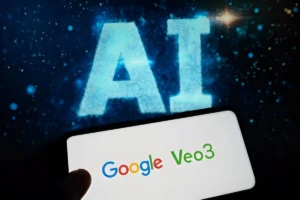
-
Expanded Length & Resolution
-
Next-gen models will aim for higher resolutions (1080p, 4K) and longer clip duration—think 30+ seconds or full narrative scenes.
-
-
Better Coherency & Physics
-
Reducing artifacts and improving motion realism is top priority for major developers.
-
-
Audio Integration to Grow
-
Veo 3 leads the pack, but others will join with lip-sync, dialogue, and full soundscapes.
-
-
Regulation & Content Safety
-
Expect stricter moderation workflows and watermark adoption to combat misuse.
-
-
Fine-Grained Control
-
More models offering scene-by-scene editing, timeline control, avatar manipulation, and script-based generation.
-
Final Verdict
The best text to video ai offerings today balance innovation with growing pains:
-
Veo 3 leads for realism and audio, though access and moderation are key issues.
-
Sora brings promise through ChatGPT integration and quality output.
-
Emerging tools (Midjourney, Kling, Freepik, Runway) offer creative flexibility.
-
SaaS and enterprise tools like MuseStreamer and Colossyan fill corporate and training niches.
-
Web-integrated platforms (Canva, Veed.io) lower the barrier to adoption.


